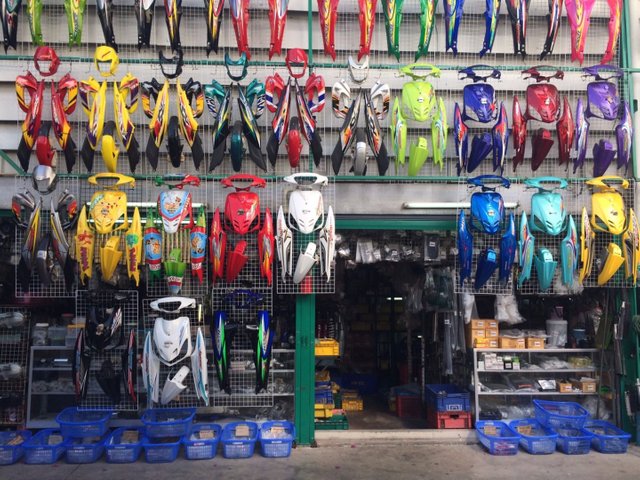Discover Top Quality Moto Parts NZ for All Your Motorcycle Requirements
Discover Top Quality Moto Parts NZ for All Your Motorcycle Requirements
Blog Article
Mastering Motorcycle Gears: Just How to Maximize Your Riding Experience
In the realm of motorcycling, understanding the art of gear manipulation is essential for enhancing your riding performance. Correctly utilizing and understanding motorbike equipments can significantly influence fuel, control, and velocity effectiveness, transforming a typical ride right into a smooth, thrilling journey.
Recognizing Gear Mechanics
At the core of motorbike characteristics, gear technicians play a pivotal role in converting engine power into motion, ultimately determining speed and control. The equipment ratios, thoroughly created, determine the relationship in between engine changes and wheel turns, impacting velocity and gas effectiveness.
Comprehending gear mechanics begins with identifying the significance of the transmission, which houses several equipments of varying sizes. These gears communicate with a process known as meshing, where teeth of different gears engage to transmit power.
Furthermore, the concept of gear shifting is indispensable to making best use of efficiency. Prompt and smooth changes make sure that the engine runs within its optimal power band, preventing unnecessary stress and enhancing longevity (motorbike shop). By understanding these mechanical ins and outs, motorcyclists can achieve a harmonious mix of power, efficiency, and control, elevating their riding experience
Timing Your Changes
Shift timing mastery is necessary for optimizing motorbike performance and enhancing the riding experience. Effectively timed changes make certain that the engine operates within its optimum power band, which is crucial for maintaining control, accomplishing smooth velocity, and guaranteeing the long life of the motorbike. Motorcyclists have to establish an instinctive sense of when to shift gears, which includes recognizing the relationship in between engine transformations per minute (RPM) and speed.
To grasp change timing, pay attention to the engine's sound and feel, as these offer important ideas regarding when to alter equipments. The excellent shift point usually takes place when the engine comes close to the upper variety of its power band without getting to the redline. Changing prematurely can lead to an absence of power, while changing far too late may cause unneeded engine stress
In addition, road conditions and riding design influence change timing. In comparison, during highway riding, less shifts at higher speeds can be a lot more proper.
Enhancing Fuel Effectiveness
While understanding motorcycle gears is essential for efficiency, improving gas effectiveness is just as vital for both ecological and financial factors. Ideal fuel consumption not just reduces functional costs yet also minimizes the environmental impact of riding. To attain this, one must comprehend the detailed relationship between equipment option and engine efficiency.
Firstly, picking the ideal equipment at suitable speeds can significantly impact gas usage. Riding in a greater gear at reduced speeds can cause engine lugging, which is harmful to both this gas economic situation and engine health. Alternatively, riding in lower equipments at broadband results in unneeded gas usage. Therefore, maintaining an optimal balance by changing gears in positioning with roadway problems and anticipated maneuvers is vital.
Additionally, normal maintenance plays a crucial duty in fuel effectiveness. Ensuring that the motorbike is well-tuned, Full Report with clean air filters and appropriately blew up tires, can minimize and enhance the rules of aerodynamics gas waste. Taking on a riding style that accepts gradual acceleration and smooth slowdown can add to better gas economy.

Techniques for Smooth Transitions
Attaining smooth equipment shifts is basic to improving the riding experience and ensuring the longevity of a motorcycle's transmission system. Proper gear shifting not only contributes to a seamless ride however likewise reduces wear and tear on the mechanical parts. To grasp the art of smooth changes, motorcyclists must focus on a few vital methods.

Second of all, clutch control plays an essential function. Involving and disengaging the clutch efficiently requires method. The clutch lever ought to be released slowly, permitting a smooth transfer of power from the engine to the wheels without causing a shock or sudden movement.

Adjusting to Roadway Problems
Browsing varied roadway conditions is a crucial skill for any kind of motorcyclist aiming to maintain control and security. Whether you're riding on damp surface areas, gravel roadways, or browsing doglegs, your ability to adjust your gear usage and riding technique is critical. Comprehending exactly how to change your equipments suitably can substantially impact traction and stability, making sure a safer journey.
In comparison, when riding on crushed rock or irregular surface, lower equipments are more suitable. Lower equipments next page give better control and allow you to react more quickly to unexpected modifications in the roadway surface.
Sharp curves require accurate gear monitoring to balance rate and control. Downshifting prior to going into a contour can help maintain momentum while making sure the motorcycle remains secure throughout the turn. Constant method in varied problems boosts your capability to react and anticipate to adjustments in roadway appearance and incline.
Conclusion
Grasping motorcycle gears dramatically boosts the riding experience by boosting gas, acceleration, and control performance. Adjusting equipment option to various road problems, such as making use of higher gears on damp surface areas and lower gears on gravel, further enhances handling and security.
Comprehending equipment technicians starts with acknowledging the relevance of the transmission, which houses multiple gears of varying sizes. These equipments connect with a procedure known as meshing, where teeth of different gears engage to transmit power (motorcycle shop). Mild adjustments to the throttle during gear changes can prevent jerky activities and maintain a constant riding rate
Whether you're riding on wet surface areas, gravel roadways, or navigating sharp turns, your capacity to adapt your equipment use and riding strategy is paramount. Adjusting gear choice to different road conditions, such as making use of higher gears on damp surface areas and lower equipments on gravel, further enhances handling and safety.
Report this page